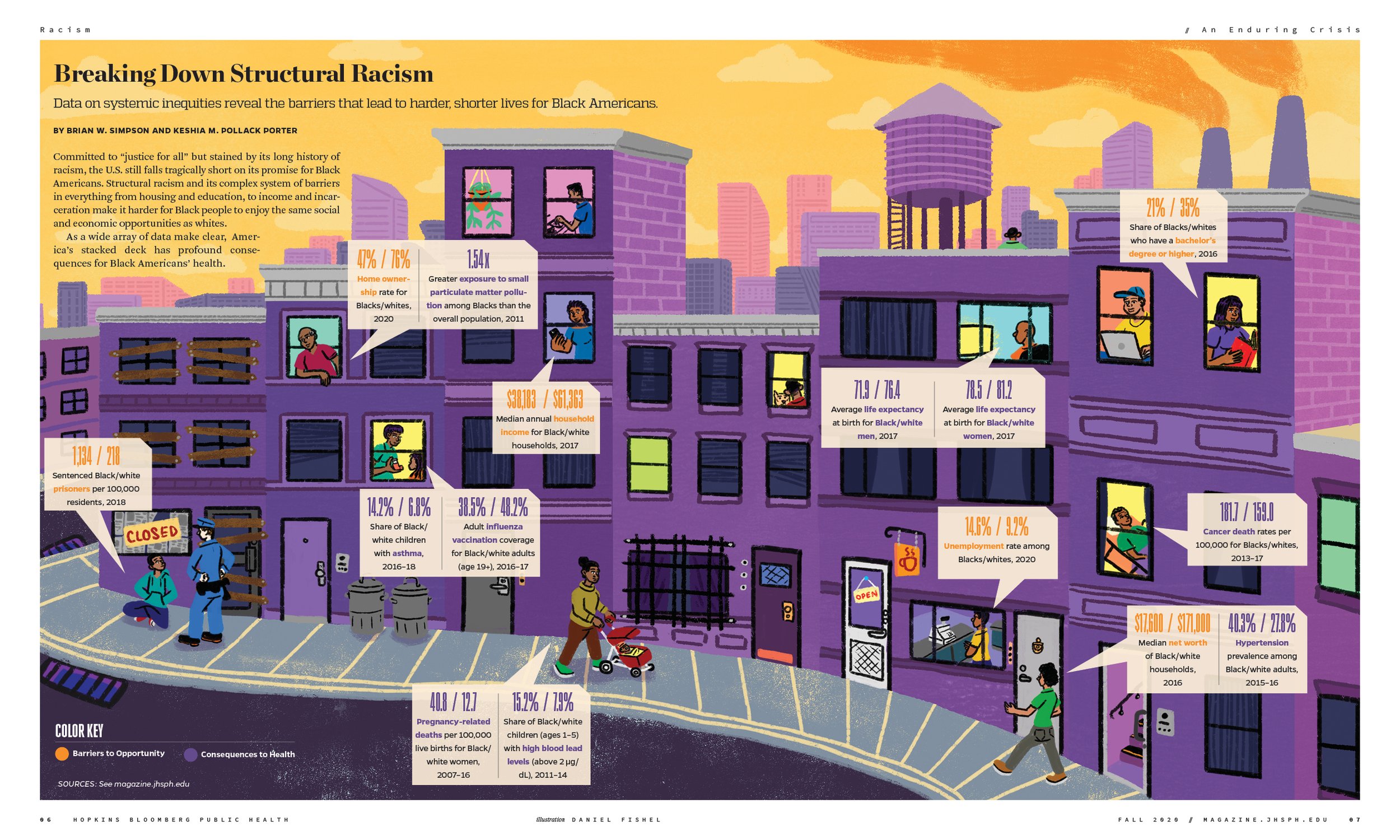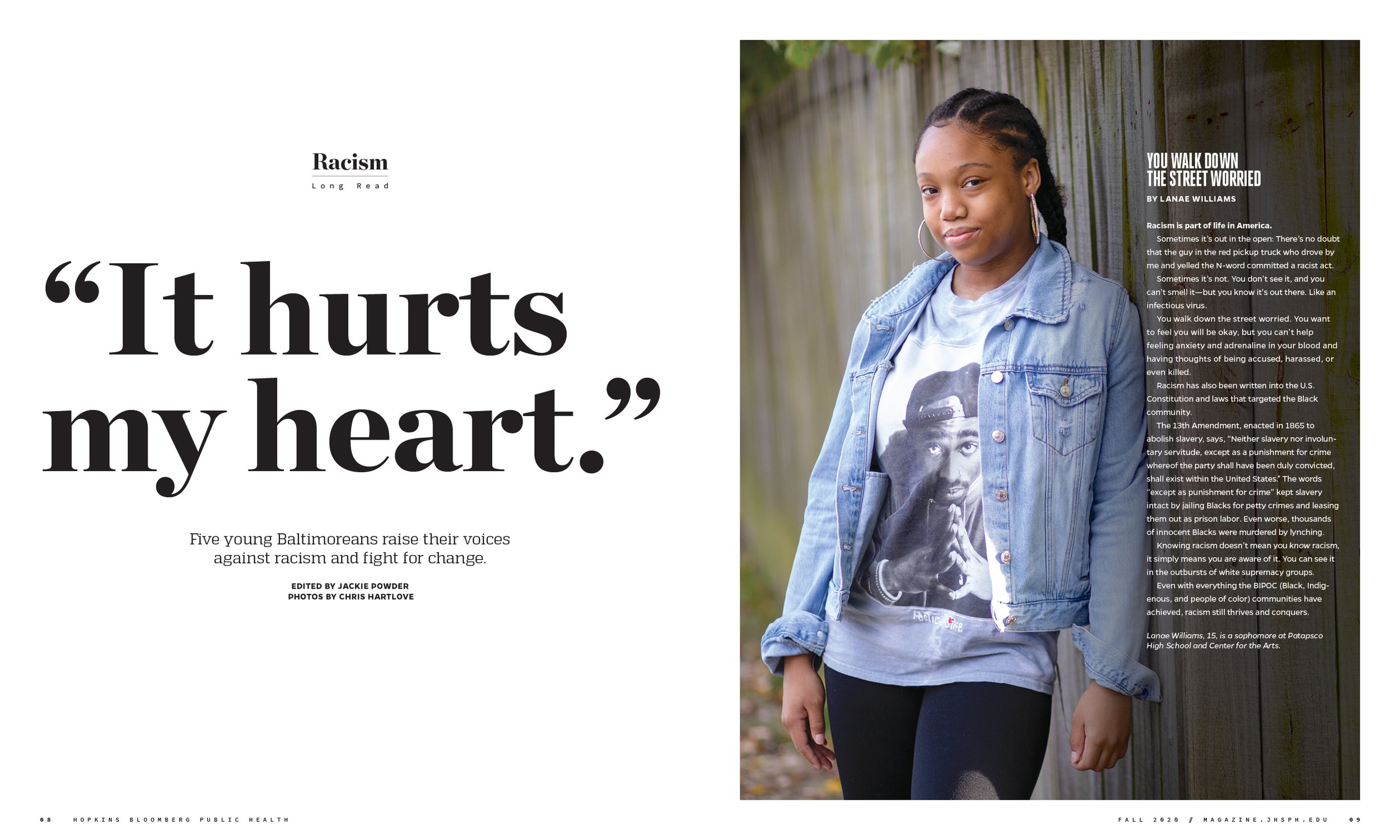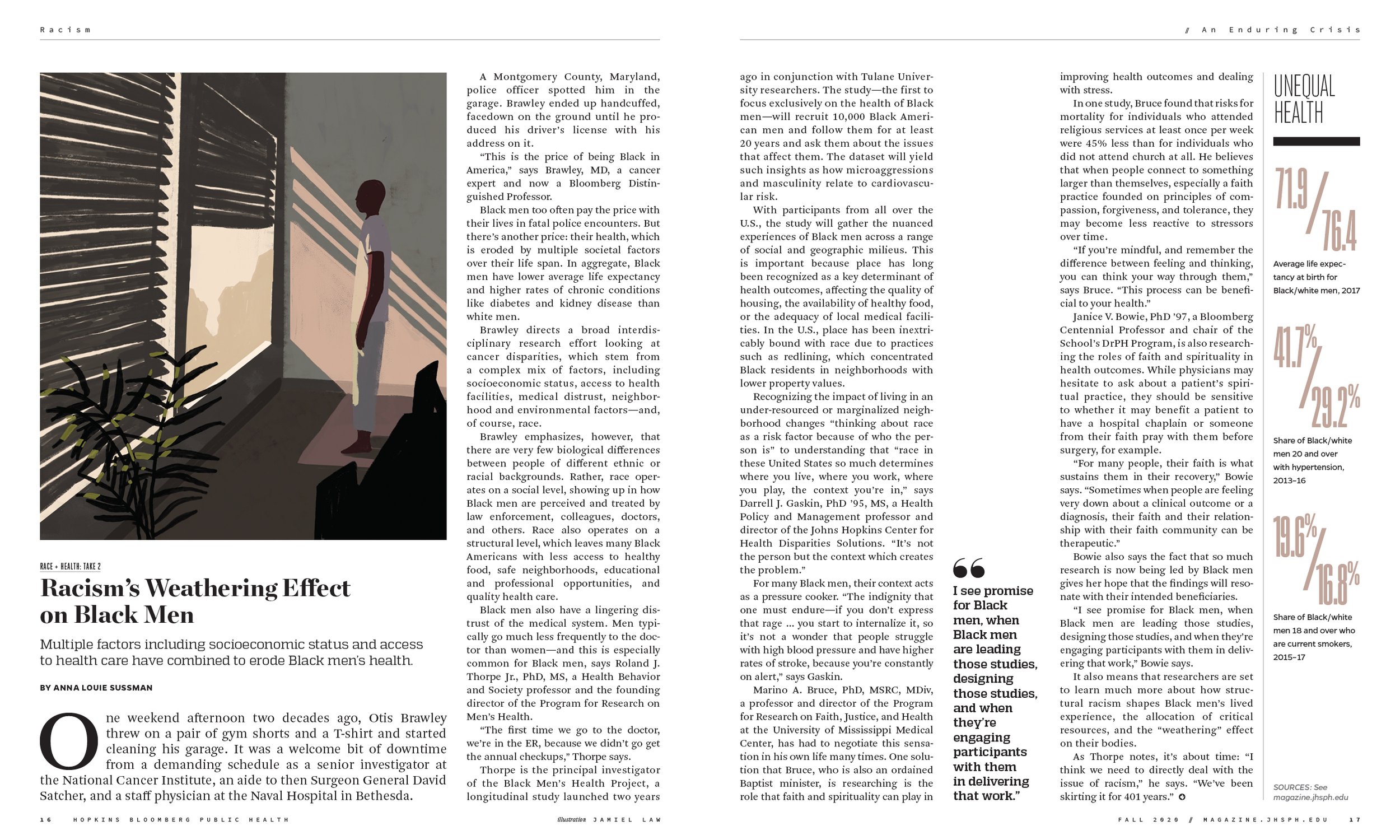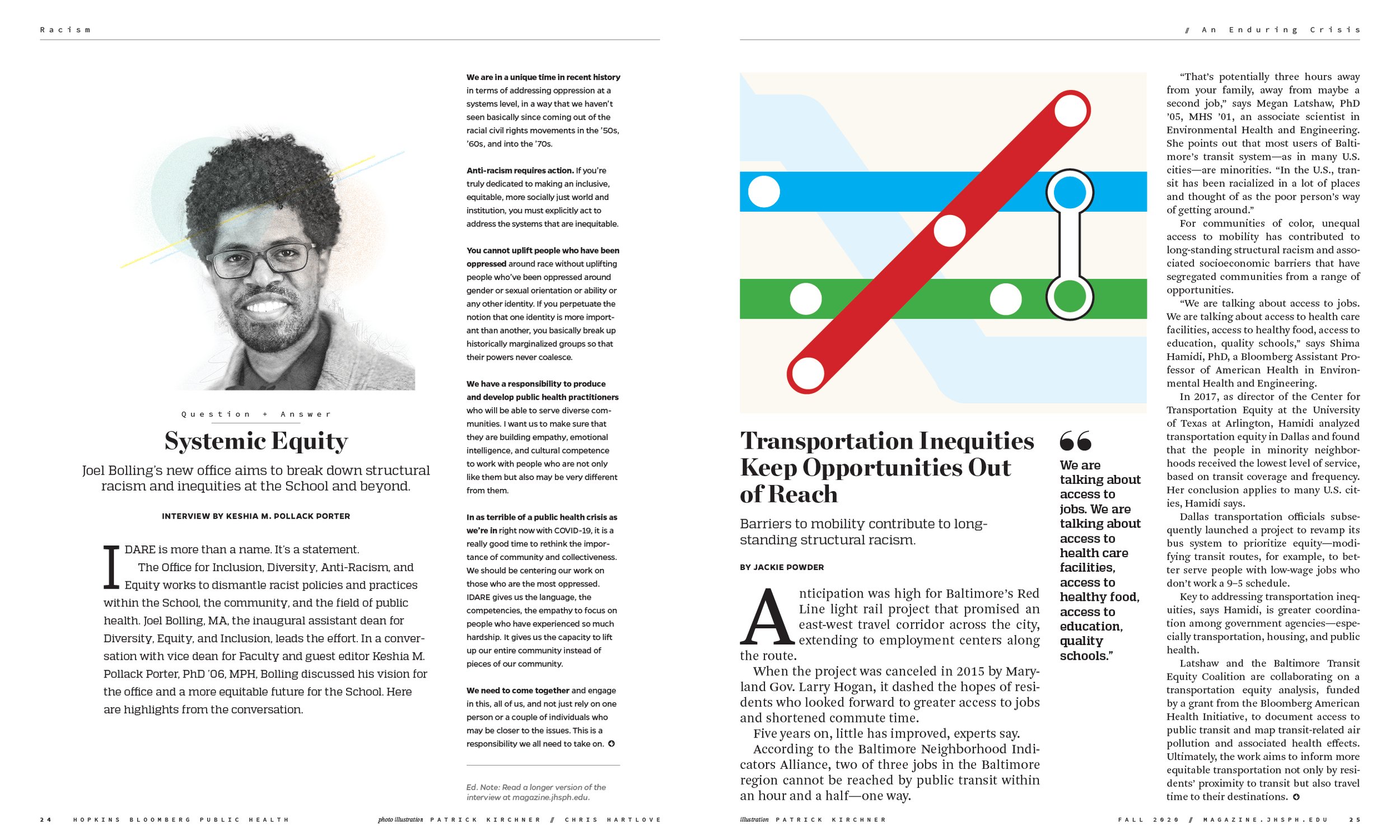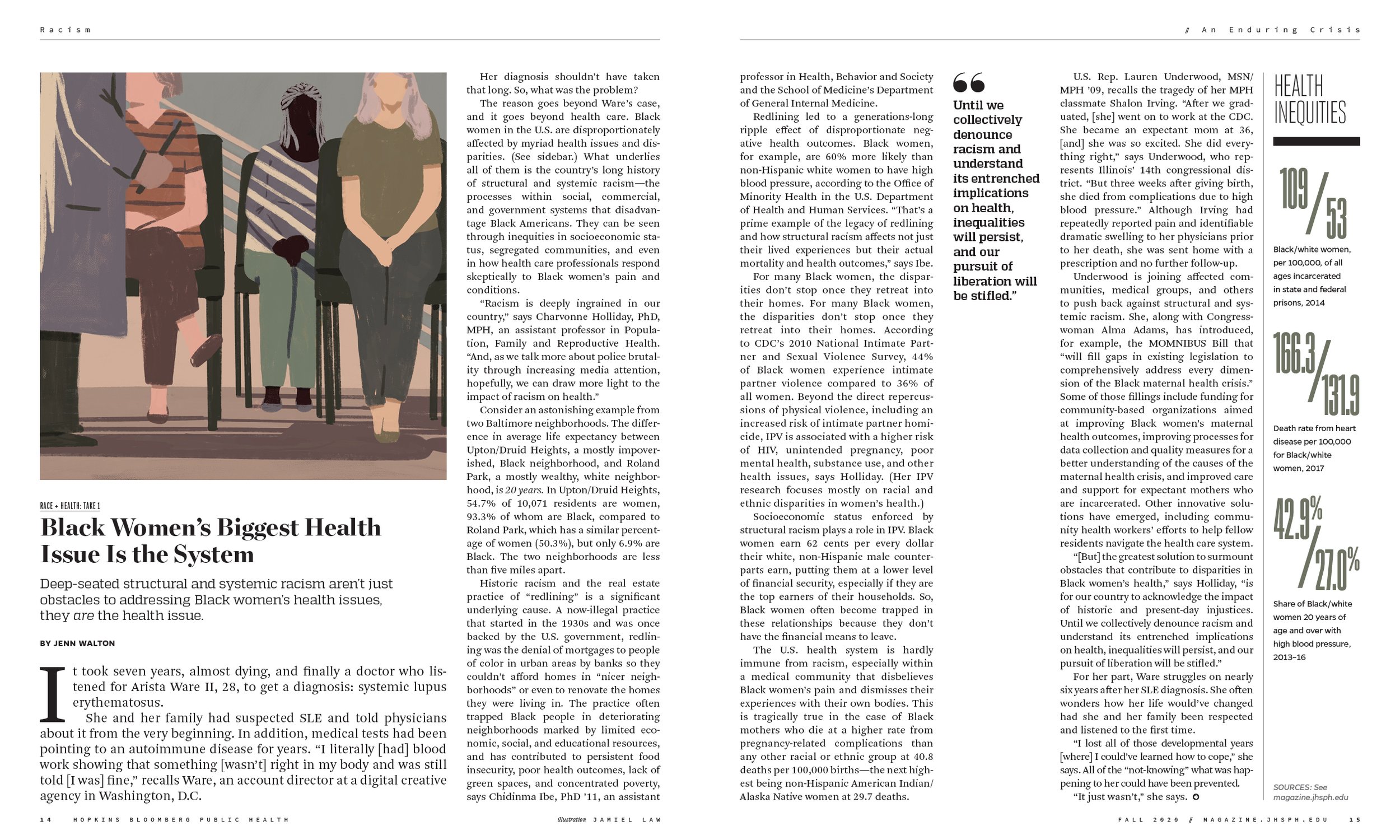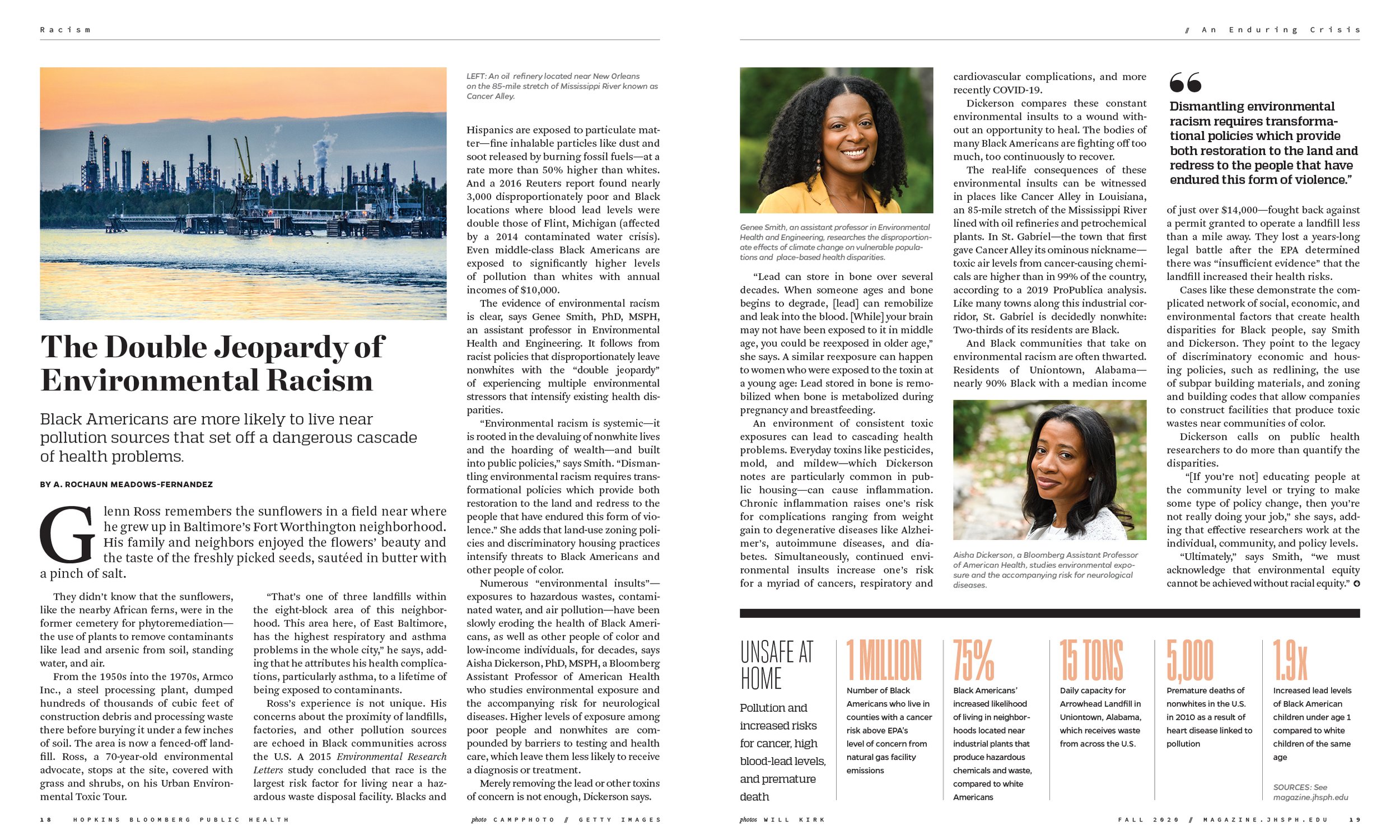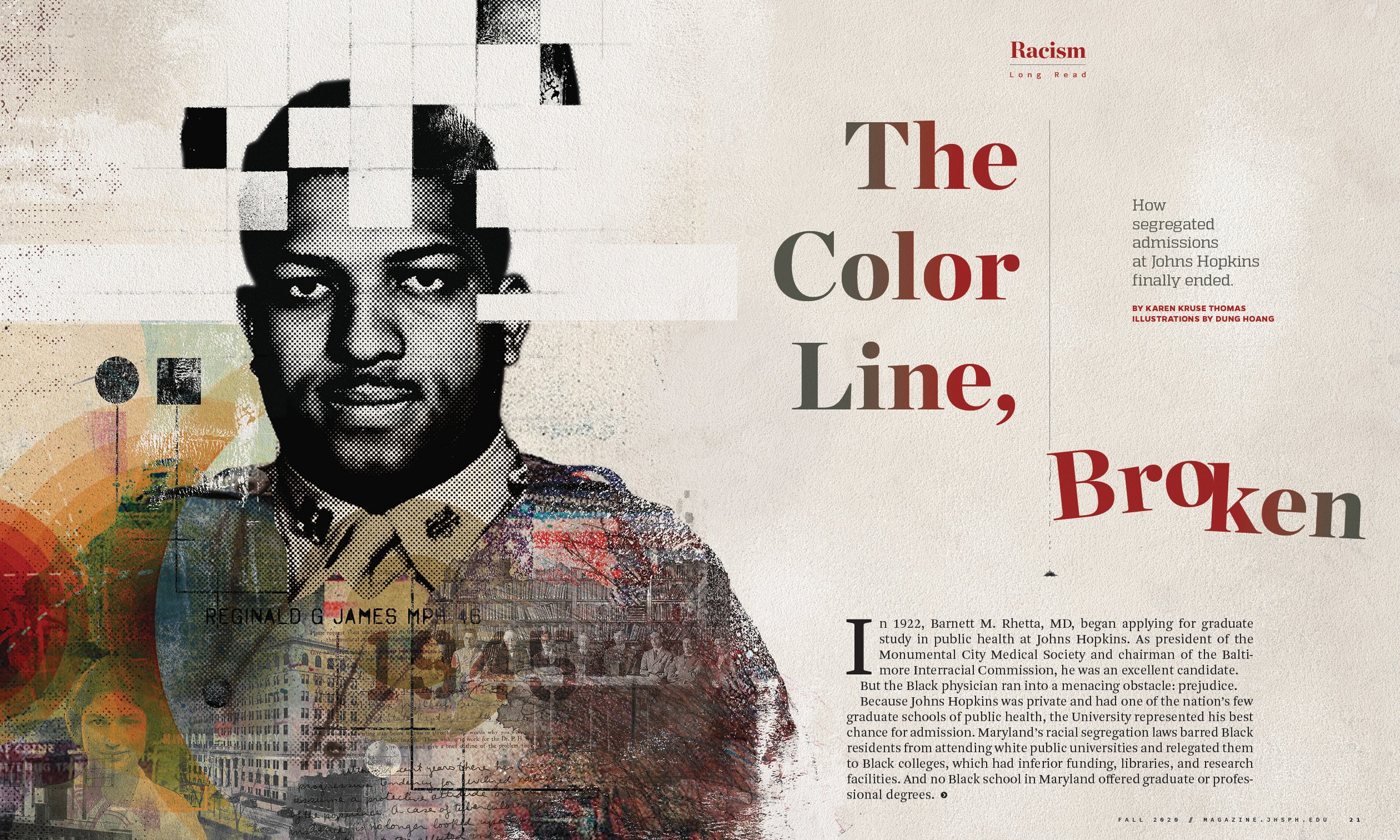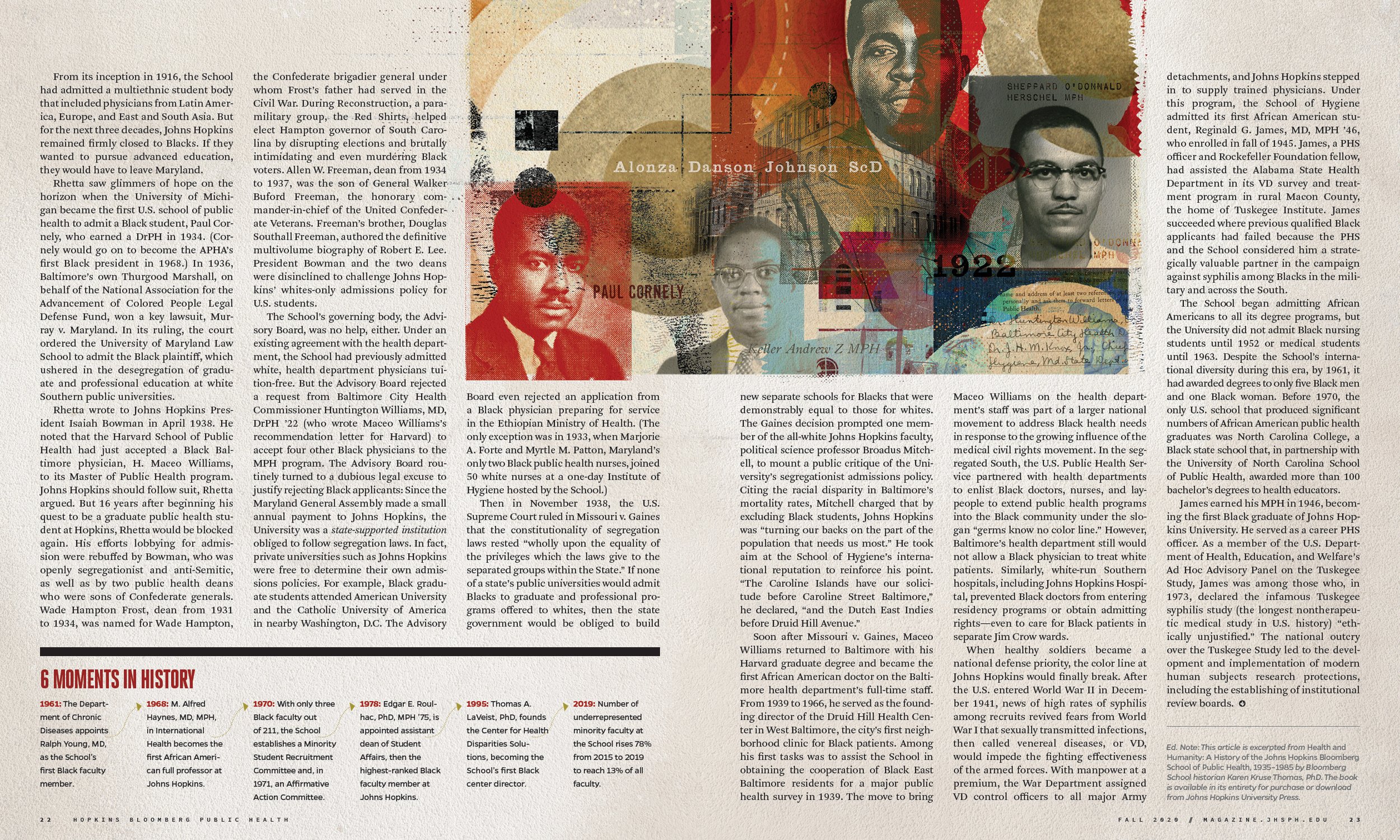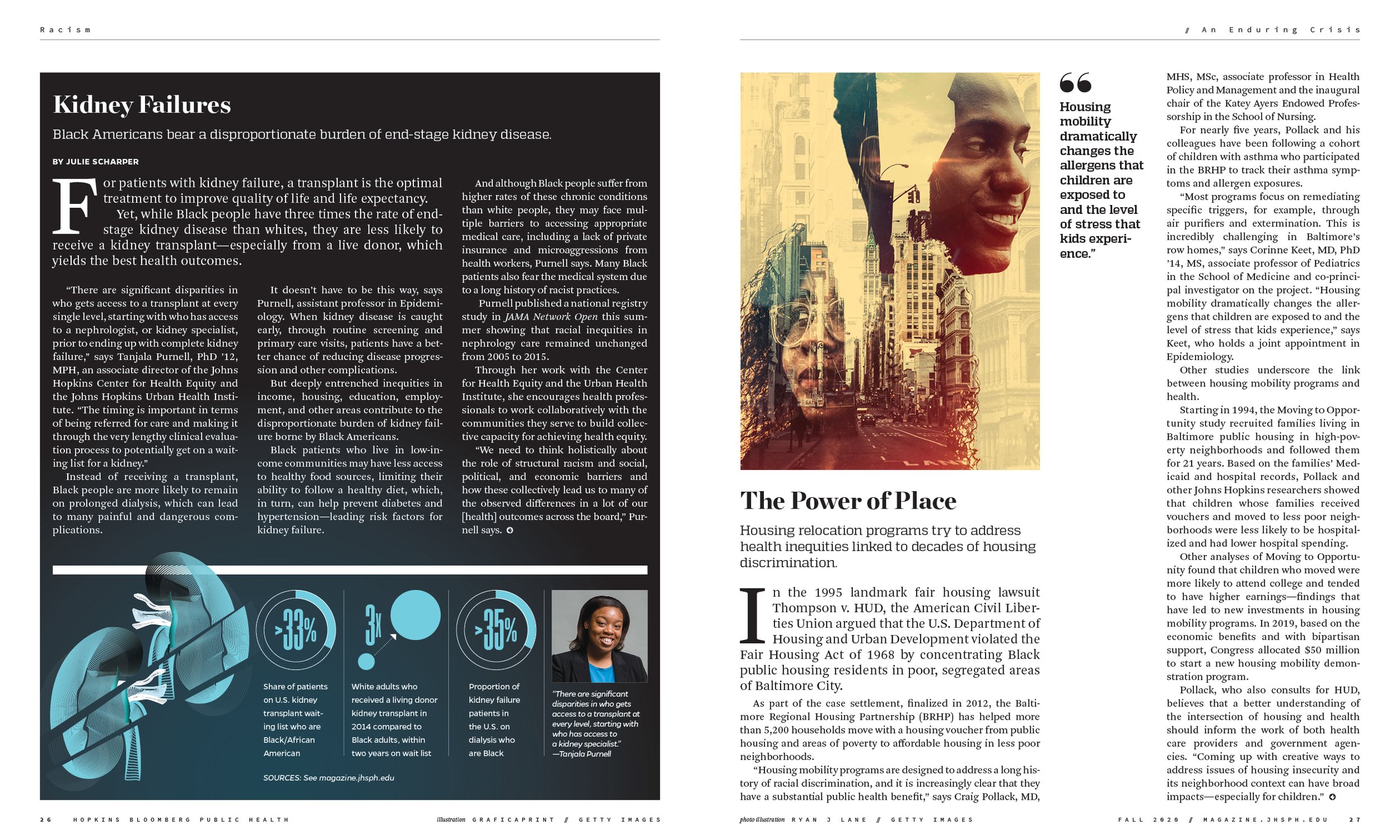When Stories Make Real-World Impact
Man, it’s a pleasure to work with some of the talented editors, writers, and artists over here at Dog Ear. They’re fun, smart, and thoughtful. And we get to tag along.
Part of the reason we love doing this work is because the stories we tell have impact—editorially and visually, of course, but also beyond the page in the real lives of the people we reach. It’s a joy to be a part of a team that takes on pressing topics and dives deep into the exploration of those issues.
For fall 2020, Hopkins Bloomberg Public Health magazine dedicated its issue to the theme of racism as a public health crisis. It was poignant in its approach and crisp in its execution: Personal essays; data-driven pieces that explore systemic inequalities and their effect on the lives of Black people; thoughtful explorations that break down public health threats to Black women and Black men as individual health groups; and even a piece that tells the story of Johns Hopkins’ own segregated admissions process that lasted until the first African-American student enrolled in the fall of 1945.
It’s bold. It’s thoughtful. And it’s heartbreaking all at once. But most of all? It’s needed.
It’s no wonder that the Anthem Awards saw fit to give the Johns Hopkins Bloomberg School of Public Health a Gold award in the not-for-profit awareness category for diversity, equity, and inclusion. Other Gold winners include Nike, Google, The Daily Show, HBO Max, and other Gold winners.
Congratulations to the team at Johns Hopkins Bloomberg School of Public Health, and Dog Ear’s own Patrick Kirchner, who executed the magazine’s redesign and handles the design and layout of each issue, as well as the many talented writers, photographers, and illustrators who helped bring it to life, including Keshia Pollack Porter ,Simone Martin-Newberry, Jamiel Law, Dung Hoang, Daniel Fishel, Chris Hartlove, Jenn Walton, Brennen Jensen, and Anna Louise Sussman .
We’re proud of this award—but we’re even more proud of the work and the thought the people behind it.




